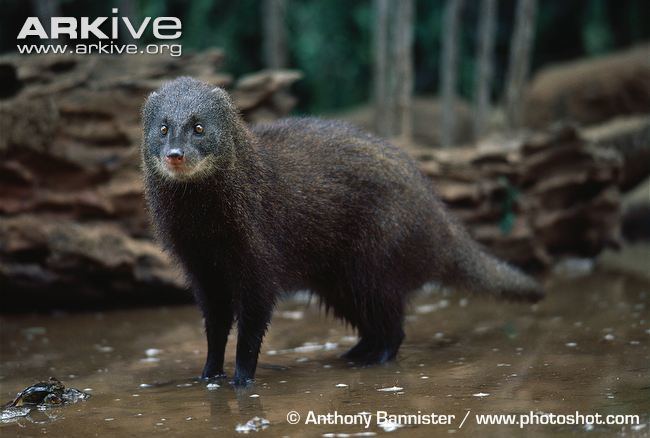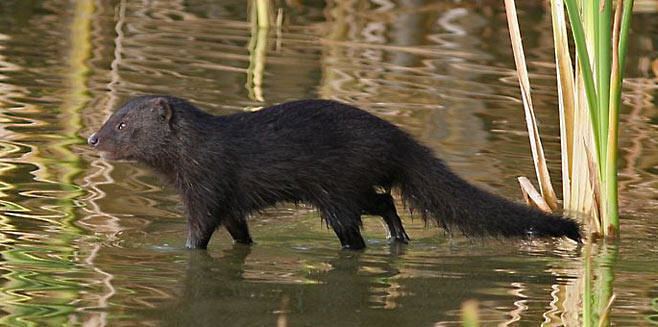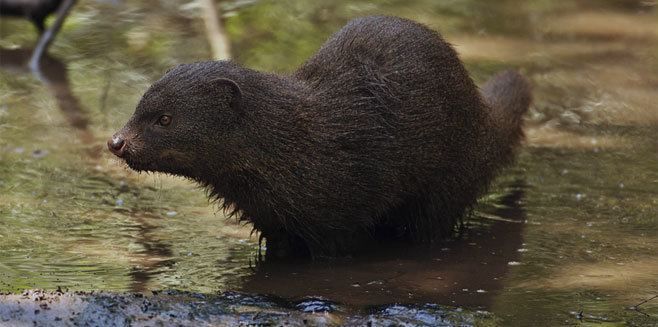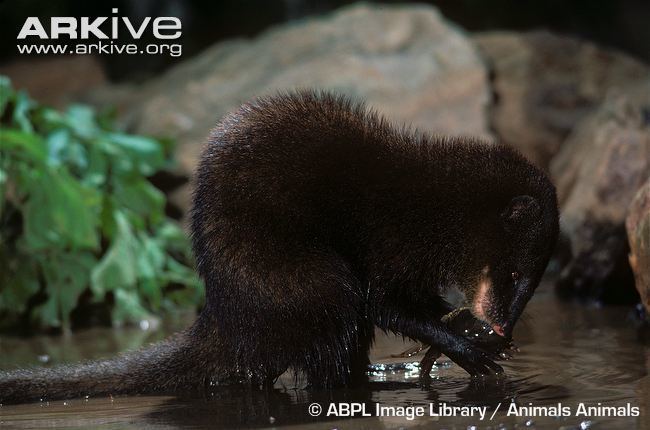Subfamily Herpestinae Scientific name Atilax paludinosus Higher classification Atilax Tail length 25 – 36 cm (Adult) | Phylum Chordata Family Herpestidae Genus AtilaxF. Cuvier, 1826 Mass 2 – 5.5 kg (Adult) Rank Species | |
 | ||
Length 44 – 62 cm (Adult, Head to the base of the tail) Similar Mongoose, Bdeogale, Bushy‑tailed mongoose, Crossarchus, Black‑footed mongoose | ||
Metal gear solid 5 mgs5 25 rare animals marsh mongoose
The marsh mongoose or water mongoose (Atilax paludinosus) is a medium-sized mammal, but a large mongoose. Its weight can range from 2 to 5.5 kg (4.4 to 12.1 lb), with an average range of 2.5 to 4.1 kg (5.5 to 9.0 lb). From the head to the base of the tail, these animals range from 44 to 62 cm (17 to 24 in), with the tail adding 25–36 cm (9.8–14.2 in). It is a member of the mongoose family and the only member of its genus. Atilax paludinosus is found throughout sub-Saharan Africa, with a preference for permanent freshwater habitats bordered by dense vegetation, such as marshes, reed beds, and estuaries (though sightings have been recorded in hilly areas with little or no aquatic wildlife presence). The marsh mongoose is an important member of the community of animals inhabiting the papyrus swamps, where deoxygenated water limits aquatic life to various air-breathing fish, frogs, insect larvae, snails, and mammals.
Contents
- Metal gear solid 5 mgs5 25 rare animals marsh mongoose
- Mgsv 100 completion list animal capturing 32 marsh mongoose 60fps
- Fur
- Behavior
- Reproduction
- Human interactions
- References

Mgsv 100 completion list animal capturing 32 marsh mongoose 60fps
Fur

The marsh mongoose's dark brown fur, with black-tipped guard hair, is long and coarse on the body. The paws, unwebbed with underdeveloped pads, are soft and sensitive, resembling those of a raccoon, with the thumb passively enhancing grip on slippery surfaces. The claws are short and blunt and used for digging . There is little hair around the anus and on the upper lip. Typically, there are two pairs of mammae. The lower canines are well formed, while the premolar teeth are thick and used for crushing hard foods. The thick tail narrows shortly to a point.
Behavior

The marsh mongoose is a voracious omnivore, consuming any form of meat it can catch, as well as a wide variety of fruit. This mongoose will frequently swim along river banks, its head above the water, patiently and methodically sifting through underwater holes and crevices looking for aquatic animals to eat. An intelligent creature, the marsh mongoose has been observed throwing crabs and snails against rocks in order to break open the shells. Some accounts claim that the marsh mongoose will sometimes lie very still, its tail up, and that in this position, the pink anal region makes a startling contrast against the dark fur, which induces birds to come near and peck at it; when the birds come near, they are killed and consumed.

The marsh mongoose is solitary, spending most active time at night, and crepuscular, though activity has been observed during the day. An excellent swimmer, the marsh mongoose nonetheless prefers to keep its head above water, and frequently rests on patches of grass and floating vegetation. Regular in its habits, this mongoose follows smooth and well-defined paths near shorelines and other water bodies, frequently hidden by vegetation. The territories of marsh mongooses are rigidly enforced, exclusive, and usually spaced along the waters around which they dwell. When threatened, the marsh mongoose emits a low growl, which may explode into loud, barking growling if it is further endangered. If cornered or otherwise seriously frightened, this mongoose may shoot streams of foul, brown fluid from its anal sacs. When excited, the marsh mongoose may make a high-pitched cry or an open-mouthed bleat.
Reproduction
The breeding habits of the marsh mongoose are little known. Two litters are produced a year, usually in the dry season and then in the wet season. A hole, near water, with dry grass bedding is usually used for birth, though if a hole is unavailable near water, nests are made of reeds, grass, and sticks. Up to three offspring per litter have been recorded, and the young open their eyes in 9–14 days, with weaning complete at 30–46 days. A second adult may accompany the family. Soon after weaning, the young depart.
Human interactions
In some parts of Africa, the marsh mongoose is kept as a pet, and is considered tame and very clean if raised from a young age. In captivity, this species has been recorded as living up to 17 years.
